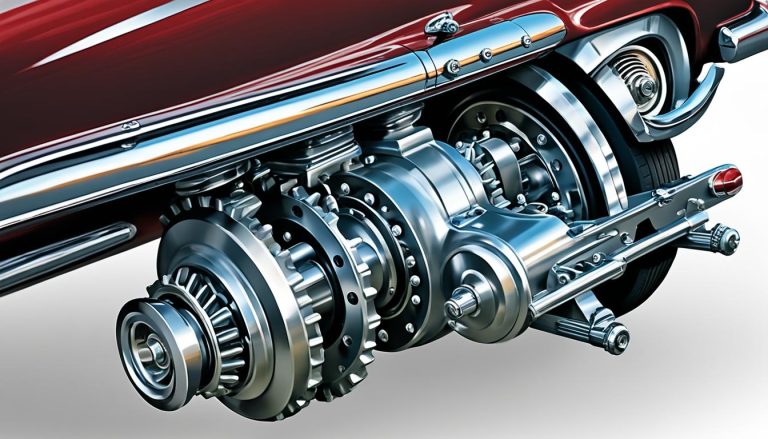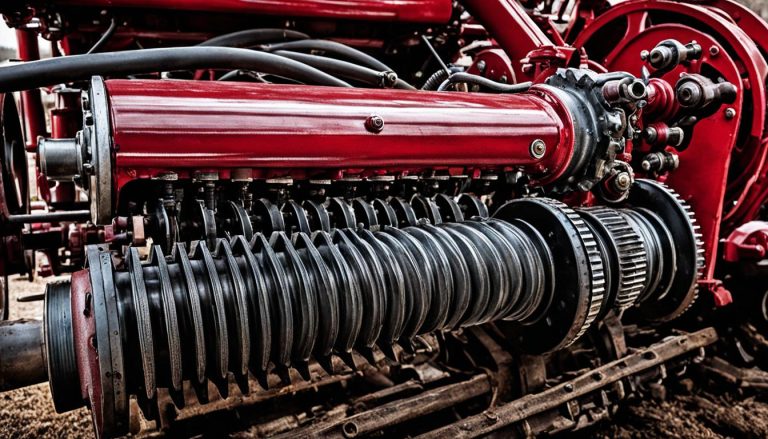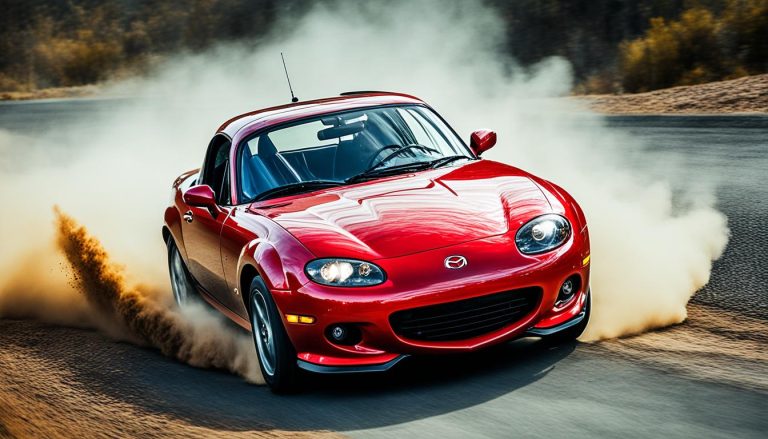Independent Rear Suspension vs Limited Slip Diff
When it’s time to rev up your driving experience, you’re faced with a plethora of options within the realm of automotive technology. At the heart of this high-performance journey lies a pivotal choice: should you opt for an independent rear suspension (IRS) or a limited slip differential (LSD)? Both these components play significant roles in vehicle dynamics, but they cater to different aspects of handling. An IRS system offers each wheel the freedom to move independently, giving you an edge in comfort and stability, particularly over rough surfaces. On the other hand, LSD is your go-to for superior traction, cleverly distributing power to the wheel that needs it most, and shines in scenarios where one tire might lose its grip. This performance comparison isn’t about picking winners; it’s about aligning upgrades with your driving desires and demands.
Understanding independent rear suspension vs limited slip diff is crucial as you dive into the world of enhanced handling and performance. You’re not just buying parts; you’re crafting your vehicle’s character on the road. So buckle up and let’s explore the impact of IRS and LSD on your drive!
Key Takeaways
- IRS enhances comfort and handling, especially over uneven terrain.
- LSD excels in optimizing traction and power distribution.
- Both IRS and LSD are critical for vehicle dynamics but serve different functions.
- Knowing which system to choose depends on your driving conditions and preferences.
- A thorough comparison can guide your decision for the ideal performance upgrade.
Understanding the Dynamics of Independent Rear Suspension
As you delve into the world of automotive technology, the term independent rear suspension (IRS) frequently crops up, especially when discussing driving comfort and handling improvements. The IRS system is distinguished from traditional solid axle arrangements by its ability to allow each wheel to independently interact with the road. This sophisticated form of suspension engineering not only smoothens your ride by effectively absorbing bumps and imperfections on the surface but also enhances stability and traction.
The key advantage of IRS is the autonomy it provides to the wheels, permitting vertical movement without affecting the opposite wheel. This design minimizes the transfer of road shock from one wheel to the other, leading to better traction as each wheel maintains contact with the surface. IRS is a testament to automotive technology evolution geared towards both driver pleasure and vehicular poise.
- Minimized body roll during cornering
- Improved tire contact with the road for control
- Reduced suspension noise for a serene driving experience
Besides these qualitative benefits, let’s look at a comparative table to further understand the dynamics of IRS:
| Feature | Benefit |
|---|---|
| Independent Wheel Movement | Allows for enhanced handling over various terrains |
| Absorption of Road Irregularities | Driving comfort improves due to the reduction of transmitted road shock |
| Reduced Wheel Hop | Gains in traction and stability, especially in performance situations |
| Decreased Body Roll | Vehicle stays more level when cornering, enhancing stability and safety |
Embracing independent rear suspension is not just about following a trend in automotive technology, but it’s about committing to a driving experience where comfort and handling are significantly elevated. Whether it’s navigating the chaos of city roads or cruising on the open highway, IRS offers a tangible difference in how your vehicle reacts and adapts to the manifold subtleties of the terrain beneath it.
Delving into the Mechanics of Limited Slip Differentials
At the heart of vehicle performance, particularly in challenging conditions, is the limited slip diff (LSD). Understanding the intricate differential mechanics is key to leveraging the performance advantages of LSD technology. Let’s take a closer look at how LSDs revolutionize power allocation and what Positraction really means for your driveability.
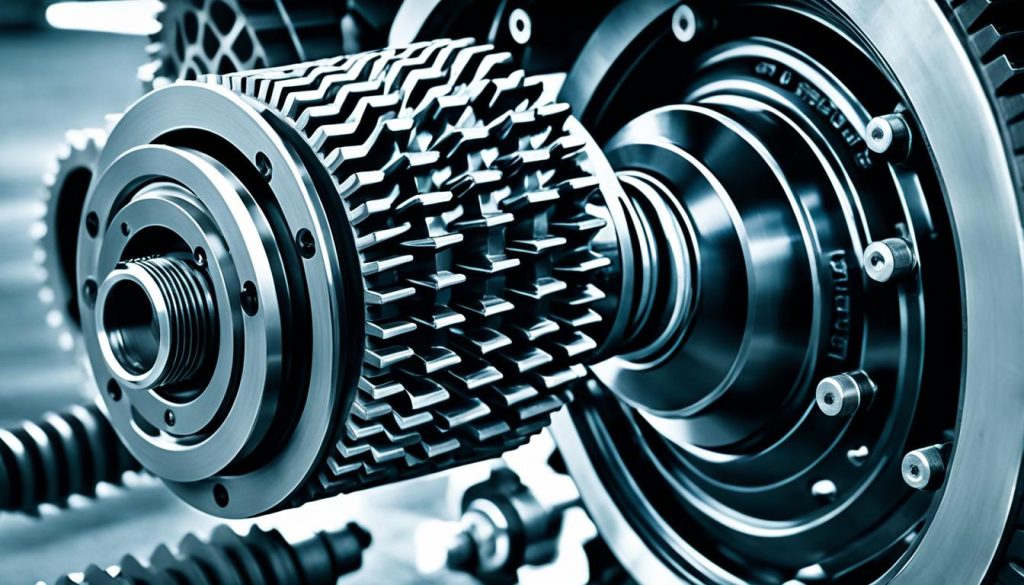
How Limited Slip Diffs Allocate Power
If you’ve ever found yourself stuck with one wheel spinning hopelessly, you’ve encountered the limitations of open differentials. Unlike their primitive counterpart, LSDs enhance traction control by smartly allocating power to the wheel with the most grip. Whether it’s a slick patch of ice or a sharp corner, an LSD will ensure you keep moving forward by adjusting the torque between wheels, thereby reducing unnecessary wheel spin.
From Open Differentials to LSD Technology
Auto enthusiasts, hold on to your seats as we transition from the world of open differentials to the sophisticated realm of LSD technology. Utilizing mechanisms like clutches or gears, LSDs like Positraction come into play when tires start to slip. They sense the discrepancy in rotational wheel speed and step in to provide a harmonious power balance. This cutting-edge function not only safeguards your traction but also catapults your vehicle’s performance to new heights on diverse terrains.
Recognizing LSD Noises: When to Seek Repairs
Every vehicle has its share of quirks, but if you begin to hear differential noise — think of a whining, grinding, or a growling — it’s time to engage in some LSD maintenance. These ominous sounds are red flags alerting you to potential vehicle repair needs. It’s imperative to consult with a specialist in vehicle repair, preferably one seasoned in rear-end work, to address these issues promptly before they turn into larger, more costly problems.
Independent Rear Suspension vs Limited Slip Diff
When you’re sifting through the specifics of enhancing your vehicle’s performance, the technical jargon can get overwhelming. Let’s clarify one important debate: independent rear suspension (IRS) versus limited slip differential (LSD). Think of IRS as the feature that keeps your ride smooth and stable, adapting to each bump and turn individually for optimal comfort and handling. Meanwhile, LSD steps in chiefly to bolster traction, powering you through slick areas by ensuring that both wheels are actively propelling you forward, especially when one tire might otherwise spin out.
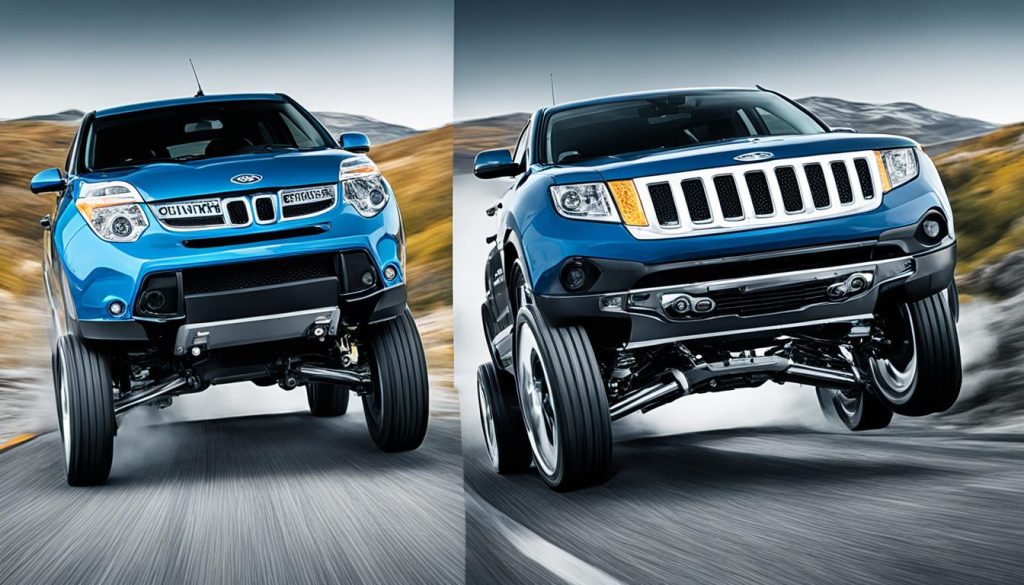
Understanding their differences and features is key to upgrading your vehicle’s performance. Below is a table that breaks down these differences, giving you real insight into how each of these key components works in the wild.
| Feature | Independent Rear Suspension (IRS) | Limited Slip Differential (LSD) |
|---|---|---|
| Primary Benefit | Enhanced handling and comfort | Improved traction |
| Mechanism | Allows wheels to move independently | Limits speed difference between wheels |
| Advantageous Terrain | Uneven surfaces for superior articulation | Low-traction surfaces for better grip |
| Effect on Ride | Reduces body roll and maintains tire contact | Minimizes wheel spin and distributes power |
| Ideal for Vehicle Type | Luxury and performance vehicles | Performance and off-road vehicles |
In a nutshell, if your daily drive consists of twisting roads or highways brimming with irregularities, you’ll appreciate the finesse of IRS. If, however, you often face rain-soaked streets or adventurous off-road trails where grip is a premium, then an LSD is your steadfast ally. Both systems are about mastering control and response during your drive, but they cater to distinct challenges on the road.
Performance Comparison: IRS and LSD in Action
When assessing vehicle dynamics and handling improvements, independent rear suspension (IRS) and limited slip differential (LSD) stand out for their respective roles in enhancing the driving experience. Here’s how these systems compare in terms of performance enhancement:
Advantages of IRS in Vehicle Dynamics
The independent rear suspension advantages shine particularly on-road, where handling and smoothness are paramount. The individual wheel movement provided by IRS delivers a refined ride quality and sharp handling characteristics, especially visible during cornering. Here is what IRS brings to your drive:
- Maintains consistent road contact for all wheels, absorbing bumps and irregularities with ease.
- Minimizes body roll, enhancing stability around curves.
- Offers a plush, controlled ride, marking it as a top choice for luxury and sports cars.
When Limited Slip Diff Makes the Difference
In contrast, the limited slip diff becomes a game-changer in scenarios where optimal traction is a must, notably in off-road conditions or when spirited driving calls for each wheel to contribute to the traction. The unique attributes of LSD include:
- Power distribution to the wheel with the most grip, mitigating slip conditions.
- Enhanced performance during acceleration, cornering, and in low-grip scenarios.
- Increased traction control, significantly improving on-road and off-road capabilities.
Let’s visualize the contexts in which these systems excel:
| Feature | Independent Rear Suspension (IRS) | Limited Slip Differential (LSD) |
|---|---|---|
| Primary Benefit | Handling and Comfort | Traction and Control |
| Ideal Use Case | On-Road Precision Driving | Performance and Off-Road Driving |
| Handling in Corners | Reduced Body Roll | Improved Grip & Stability |
| Terrain Negotiation | Smooth Ride Over Bumpy Surfaces | Better Traction on Varied Terrains |
| Driving Scenario | Urban Cruising & Spirited Highway Runs | Aggressive Launches and Rough Trails |

The choice between IRS and LSD will often boil down to your primary driving needs. IRS will cater to a silken ride and agile on-road manners, while LSD will spearhead traction control, particularly for performance aficionados and adventurers tackling diverse terrains. Comprehend your vehicle’s requirements and match them to these systems for handling enhancements that resonate with your driving aspirations.
Pros and Cons: Weighing Your Options
When it comes to enhancing your vehicle’s underpinnings, the choice between independent rear suspension (IRS) and limited slip diff (LSD) can be pivotal. With IRS, you’re opting for a system that prioritizes handling and comfort. Imagine cruising over uneven roads with minimal discomfort—IRS is designed to deliver that superior ride quality. However, keep in mind it may bring higher maintenance expenses along with the smoother drives.
On the flip side, a LSD focuses on optimizing traction control and ensuring efficient power distribution between the wheels. If your driving adventures beckon for performance driving or overcoming the unpredictable off-road terrain, LSD becomes not just a choice, but a necessity. But let’s be practical—if your daily commute doesn’t involve slippery slopes or racetrack chases, the added benefits of LSD might not justify the investment.
Every modification to your vehicle warrants a careful consideration of the pros and cons. Your choice should resonate with your regular driving conditions and meet your performance expectations. In the realm of automotive decision-making, it’s about striking that right balance between necessity and luxury, economy and indulgence. So take stock of what you value most on the road—whether it’s the silky glide of IRS or the confident grip of an LSD—and steer your decision towards the option that best enhances your driving experience.
FAQ
What is the primary difference between independent rear suspension and a limited slip diff?
Independent rear suspension (IRS) is a type of suspension system that allows each wheel to move independently, enhancing driving comfort and handling, especially over uneven surfaces. A limited slip differential (LSD), on the other hand, is a type of differential that helps distribute power to the wheels with the most grip, improving traction under varying conditions such as slippery roads or during aggressive cornering.
How does independent rear suspension improve vehicle dynamics and handling?
Independent rear suspension offers superior handling by allowing each wheel to independently respond to road conditions. This minimizes body roll during turns, absorbs road irregularities more effectively, and maintains better tire contact with the road, which translates into a smoother and more controlled driving experience.
What is the function of a limited slip differential in a vehicle?
A limited slip differential limits the speed difference between two wheels on the same axle. By employing mechanisms such as clutches or gears, it distributes torque to the wheel with more traction, preventing excessive wheel spin during traction loss. This function is particularly beneficial in performance or off-road situations where maintaining grip is crucial.
What are the performance advantages of a limited slip diff over an open differential?
LSD technology, such as Positraction, provides a significant performance advantage over open differentials by sensing traction loss on a wheel and subsequently distributing power more evenly between the wheels. This helps to maintain control and reduces the likelihood of wheel spin, which is especially advantageous in conditions where grip levels vary, improving overall vehicle stability and performance.
How can I tell if there’s a problem with my vehicle’s differential?
If you hear whining, grinding, or growling noises when accelerating or turning, it could be a sign that your differential needs attention. It’s important to consult a specialist experienced in rear-end work to diagnose and resolve such issues before they lead to more significant problems.
Why would I choose a vehicle with an independent rear suspension over one with a limited slip diff?
Your choice depends on your priorities when it comes to vehicle performance. Independent rear suspension offers enhanced handling and a smoother ride, which is often preferred for luxury and everyday driving. A limited slip differential, however, provides better traction control and is advantageous in performance driving scenarios, such as track days, spirited driving, or off-roading. Consider your typical driving conditions and what matters most to you in a vehicle when making this decision.
Are there specific driving conditions where a limited slip differential would be more beneficial?
Yes, a limited slip differential is more beneficial in situations where maintaining traction is critical, such as on slippery roads, off-road terrains, or during high-performance driving. LSDs can significantly improve vehicle stability and control by ensuring that power is properly distributed to the wheels, especially when one wheel may lose contact with the road or face reduced grip due to adverse conditions.
What are the maintenance considerations for vehicles with independent rear suspension or limited slip differentials?
Vehicles with independent rear suspension may require more frequent maintenance of suspension components due to their complex nature. Limited slip differentials may require specialized fluids and occasionally need servicing to maintain the clutches or gears within the diff. It’s important to understand the service requirements of each system and to budget for potential higher maintenance costs to keep them functioning as intended.

